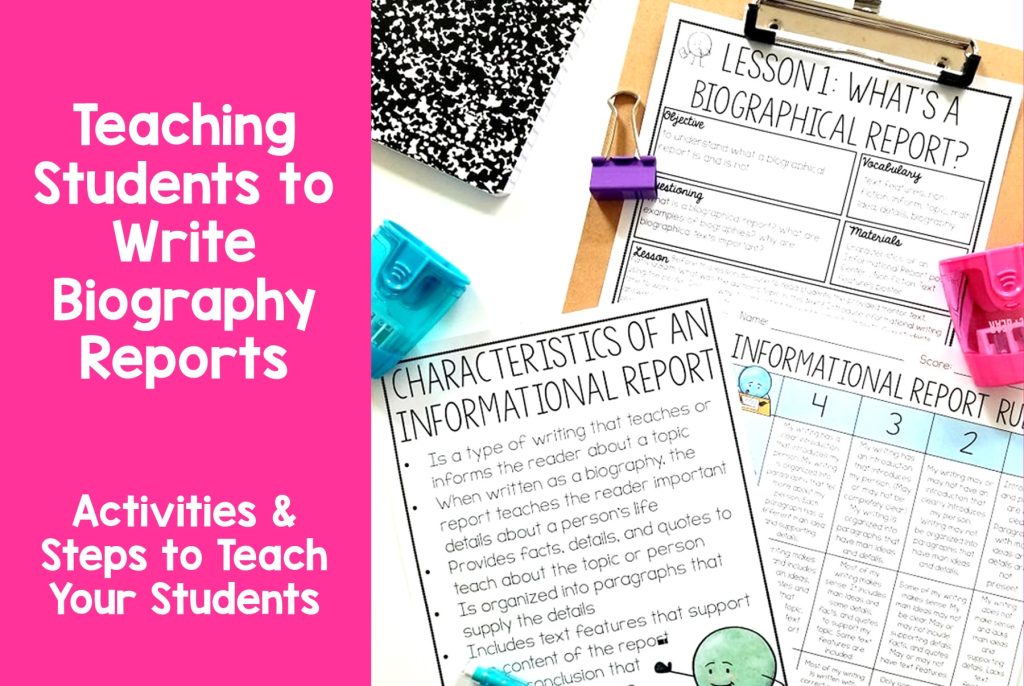
Biographies are many students’ first glimpse at history. It is one of my favorite units to teach every year. It is a great opportunity for students to read, research, use technology, and write!
If you’re teaching students to write biography reports this year, then check out how I like to break it down!

Writing these types of reports is part of the Common Core writing standards for Grades 2-5 as well as many other states’ standards. There are several steps to take as you teach your students to write a biography report.
Before I even begin to teach my students how to write a biography, I like to read several from our school library.

It is important to make note of the characteristics that biographies have so that when students write their own, they already have an understanding of how they are written!

Once students have been exposed to biographies, you can begin to teach about writing them.
Depending on the grade you teach, you may not necessarily call it “text structure,” however it is important for students to understand that most biographies are written in a chronological/sequential way.
Since we are writing about someone’s life, it wouldn’t make sense for the report to be out of order.
While we go over this, I like to create a timeline with my students.

If you are using my biography writing units, I recommend:
At the beginning of the report, students should write an engaging introduction that includes one (or both) of two main components.

Practice writing a variety of introductions and have students choose the one they like the best. (TIP: Model some poorly written introductions as well, and discuss why those are not a good fit!)
When teaching your students to write biography reports, it is important to explain to them what the body paragraphs should include.
The body paragraphs should include the major events in the person’s life.
Read over the body paragraphs from your mentor text and discuss what was included and what was not included. What was included in the timeline you created? What did you leave out?

You can make a T chart with your students and discuss what are major events in your own life, and what are not.
Most conclusions in a biography end with the person’s death.
While this can be noted, it’s important for students to understand that they shouldn’t just end their report with “and then they died in 1894”. It is more important for them to end their report with the legacy of the person.